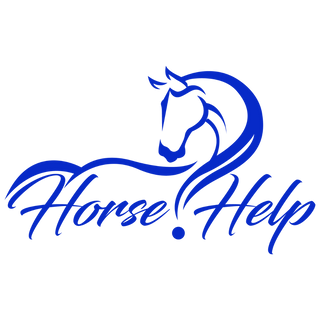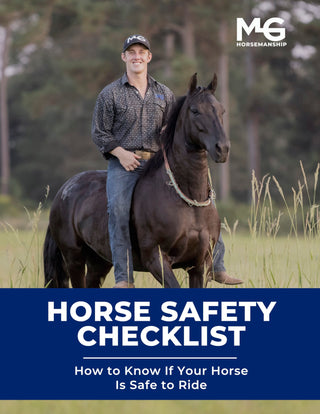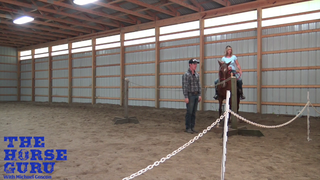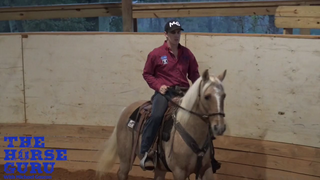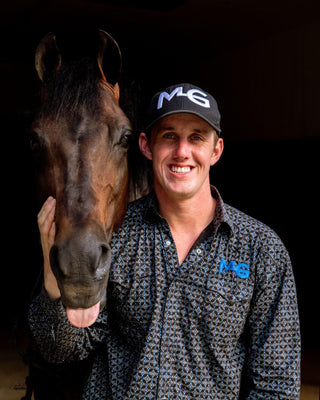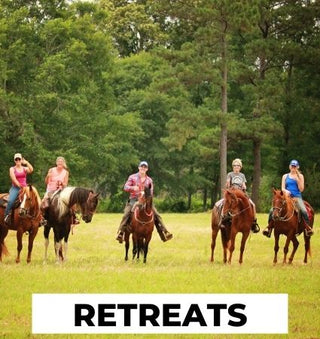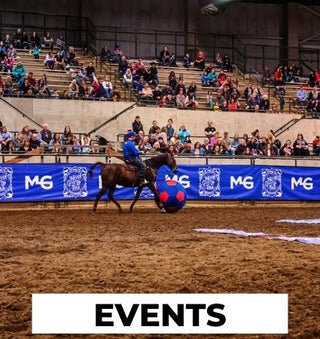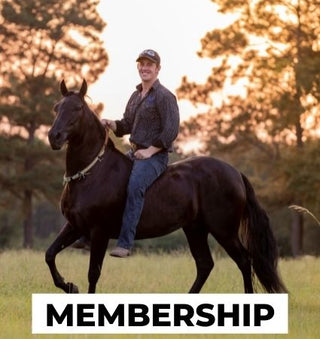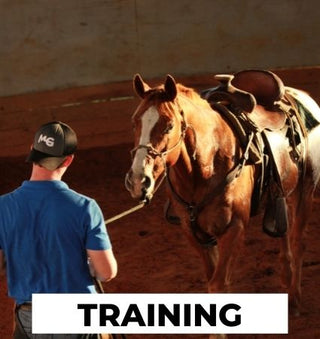Watch the Video Here or continue reading below!
Belle hadn’t left the property in five years. She was stiff, reactive, and uncertain. But by the end of her first session, she was on the path to becoming soft, supple, and gaited. In this training breakdown, world-renowned horseman Michael Gascon takes us step by step through the process of transforming a tense pacer into a relaxed, responsive partner — setting the foundation for a smooth 4-beat gait.
The Reality of Working with a Tense Pacer
When Michael first climbs aboard Belle, a Standardbred mare, he’s working with years of tension, lack of exposure, and a body locked up in pacing mechanics. She’s never been in an indoor arena. It’s her first trailer ride in years. This session isn’t just about gait — it’s about restarting from the ground up.
“If she stays stiff and rigid, you have no chance of getting a smooth gait.”
Softness Comes First
Flexing and Breaking at the Poll
Before Belle can gait, she needs to learn to give to pressure — to soften in the face, break at the poll, and ultimately round her back. Michael uses spirals, flexion, and controlled rein pressure to help Belle drop her head and release tension.
“The trick is: get her soft in the face, not pissed off. Every time I release, she’s more relaxed.”
Timing = Instantaneous Feedback
Michael emphasizes that great “timing” isn’t magic. It’s simple:
-
Apply pressure.
-
Release the moment the horse does what you want.
“Don’t release if they’re not trying. Timing is just letting go at the right second.”
Before You Work on Gait, Get the Mind Right
Many riders jump straight to gait mechanics. But if a horse is distracted by every leaf or fence post, gaiting is pointless. Michael reminds us:
“Don’t confuse unbroke with ungaited.”
Mental Relaxation is Step One
Whether it's a gaited horse or a trotting breed, the mind must be calm before forward movement can become rhythmic or smooth. Michael patiently works on getting Belle to:
-
Move forward willingly
-
Stay soft in the face
-
Be okay with new surroundings
Only after that, can gaiting begin.
Pacing vs. Gaiting: The Physical Difference
Belle shows signs of pacing — stiff, lateral movement where both legs on the same side move together. Michael explains that the key to unlocking gait lies in how the hind end functions.
“If we can get her to bend and round up her back, she’ll break up the pace and those back feet will land first.”
Trot Is Your Friend
Ironically, Michael is excited when Belle trots. Why?
“Pace is one end of the spectrum. Trot is the other. If she’s trotting, she’s relaxed and heavy on the forehand — the opposite of tight and pacey.”
This proves Belle is loosening up. From there, a little more balance and pressure can move her into a 4-beat gait.
Teaching Forward Motion Without Losing Relaxation
Using the Crop Correctly
Many horses lose their cool when introduced to a crop. But Michael doesn’t use it for punishment — he uses it to guide. He shows how to:
-
Use flexion and disengagement to safely introduce the crop
-
Build responsiveness without fear
-
Maintain softness even while adding energy
“It’s not about scaring them forward. It’s about asking them forward while staying soft.”
Finding That Sweet Spot: The First Stage of Gait
When Belle is willing to go forward, soft in the face, and relaxed in the body — Michael starts refining.
Right Outside the Walk, Right Below the Trot
This is the first gear of gait — what riders of trotting breeds might call a “jog.” It’s the in-between space where the horse is engaged but not rushed.
“That’s going to be her first-stage gait. Find it. Reward it. Let her know it’s the only place she’ll be left alone.”
Over time, Belle will learn:
-
To seek out that gear
-
That gait = peace
-
And that soft, rhythmic movement is easier than tension
Why Consistency and Release Matter
Michael’s biggest message is that you can’t hold a horse into a gait. They must be shown where to find it, encouraged when they get close, and released when they succeed.
How Gait Becomes a Choice
“If she figures out that gait is where you stop asking — she’ll want to go there.”
That’s the magic. When the horse connects the feel-good place with the desired behavior, you’re no longer forcing — you’re partnering.
Final Thoughts: Day 1 Success for Belle
By the end of this first session, Belle:
-
Is less reactive
-
Has started breaking at the poll
-
Understands pressure and release
-
Begins to trot and hint at gait
“If she can do it for three strides, she can do it for two minutes. And if she can do it for two minutes, she can do it all day long.”
Michael’s method is simple but powerful:
-
Softness before speed
-
Timing over tension
-
Teaching over forcing
